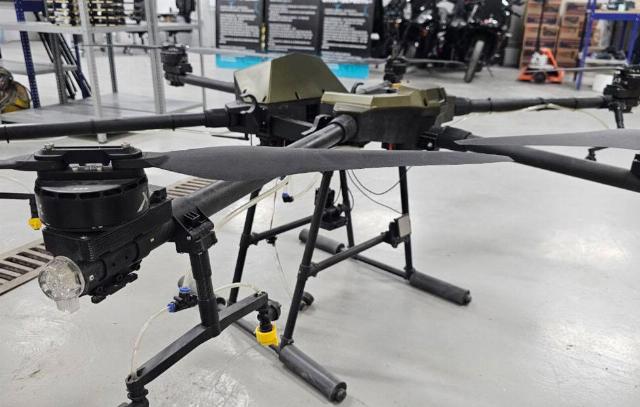Unmanned aircraft is developing at an accelerated pace in the face of fierce competition, when the modification of vehicles for combat operations "lives" for only a couple of months, and then begins to require new solutions in response to enemy technology. The drone industry is being born literally before our eyes, and it is actively supported in the country. An appropriate strategy has been approved for the period up to 2030 and for the future up to 2035. We talk about the development of the industry in the Far East
Almost two dozen productions
Issues of creating a sustainable competitive industry for the production of unmanned aircraft systems (UAS), as well as the implementation of the relevant national project, are being discussed at major forums, including the Eastern Economic Forum (EEF).
The Far East is not lagging behind the trend. The first official drone port in Russia appeared on Sakhalin, and the first inter-regional drone flight from the island to the mainland took place here.
In other regions, they are launching their own production of drones, developing models to fulfill their tasks and for civilian purposes. At last year's WEF, the regions presented their vehicles at the Far East Street exhibition, including attack and reconnaissance drones, FPV drones, and unmanned boats. There are plans to present the products at the upcoming forum.
There are currently 17 UAV manufacturers in the Far East who are implementing their projects with state support within the framework of the free port of Vladivostok, territories of advanced development (TOP), including one specially created for the production of products for the needs of the special operation Patriotic TOP.
Last year, according to the Corporation for the Development of the Far East and the Arctic, manufacturers of such products, including drones, were allocated about 4.2 billion rubles. Over 26,000 vehicles were produced, which were tested at the front and received positive feedback from the military personnel of the Eastern Military District.
Currently, UAVs are being produced in Buryatia, Yakutia, Transbaikalia, Kamchatka, the Magadan Region, Sakhalin, Chukotka, Primorye, and the Khabarovsk Territory. Their target tactical and technical characteristics are determined in the process of creation together with the commanders of the units participating in the SVO.
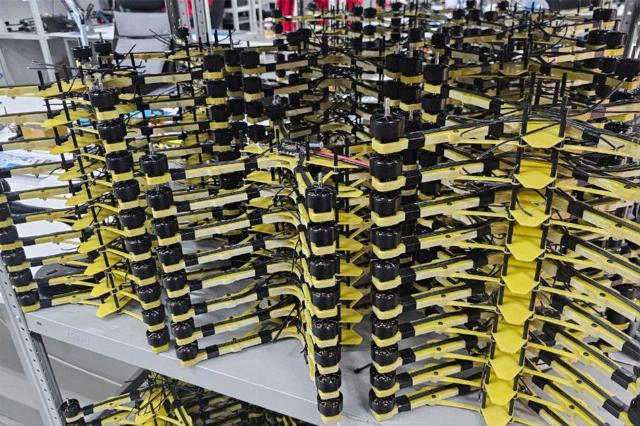
© Evgenia Letta/ TASS
Image source: © Evgenia Letta/ TASS
"In Primorye, residents of preferential regimes per year (preferential business regimes have been established in part of the territory of the Russian Federation with the provision of land and infrastructure, tax benefits and administrative preferences — approx. TASS) produces about 500 UAVs, there are plans to produce more than 7.3 thousand units per year," says Sergey Skali, Deputy General Director for Investment Project Support at the corporation.
He clarifies that we are talking not only about devices for the needs of their own, but also unmanned complexes for the transportation of goods and medical evacuation, agriculture and forestry, energy, construction, exploration, cinematography.
"There are more volumes in the Khabarovsk Territory. The TOP resident produces 5,000 drones per month and plans to reach 15,000 at the expense of attracted remote sites. The unmanned aerial vehicle developed by the company has been tested in the Main Directorate of Innovative Development of the Ministry of Defense of the Russian Federation. The components are fully localized in Russia, and the products are supplied to the police, border troops, search and rescue teams, and for the needs of the military," notes Skali.
According to him, a research and production center for the development and production of unmanned aircraft systems may appear in the Khabarovsk Territory. The regional authorities are currently working on this issue with the involvement of the Federal Center for Unmanned Aircraft Systems.
From small "Bees" to heavy hexacopters and fiber-optic drones
In Khabarovsk, one of the enterprises that launched the production of drones is Habinnotech. The team began its work with the release of the tail unit for the VOG-17 fragmentation grenade at the very beginning of its work — a request was received from one of the military units. The city administration helped with the premises, bought 3D printers for printing and other equipment with personal funds, gathered specialists, and things went well. More than 10 thousand units were produced, which completely covered the need of the military at that time.
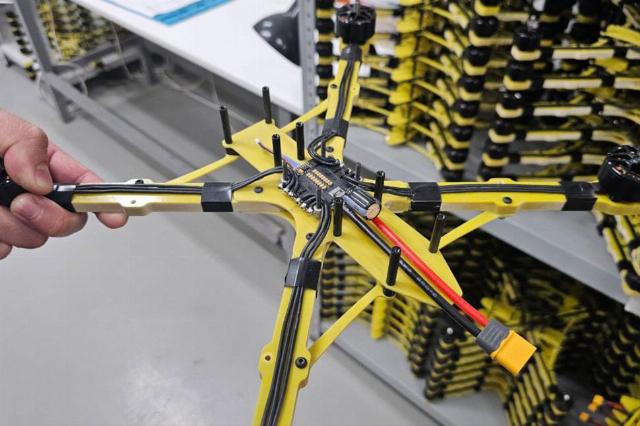
The "Bee" FPV drone
Image source: © Evgenia Letta/ TASS
"In the process of communicating with the guys from SVO, I realized that the request was much more ambitious. It was then that drones began to be actively used, and FPV drones began to appear. We decided to get involved in this story. We started with literally three engineers, these are our Khabarovsk youth, they used to be interested in aircraft modeling at an amateur level, and when the need arose, they were able to apply their skills in creating aircraft. We realized that we could create new models," says Alexander Meleka, the company's commercial director and a deputy of the Khabarovsk City Duma.
The first device released was the FPV drone "Bee". It is very small, it can be easily held in one hand. The drone could fly at about 6 km, and at the beginning of 2023, this distance was considered very large. It could also carry about 2 kg of combat load, be used as a barrage of ammunition, often with improvised explosive devices from charges for anti-tank grenade launchers. After all the necessary tests at military training grounds, drones began to be delivered to the free zone, but they quickly "disappeared into history."
The "copter model"lives" for about three to four months. Then we have to modernize, improve, refine, and complicate it. Because as soon as the facts of the defeat of equipment and forces are recorded, the enemy begins to work out counteraction systems. Previously, everything was flying on digital video signals and it was quite easy to work — practically no suppression systems were used. And then they started jamming digital video signals there — they closed the radio space, clogged the channels at long range — and the drones fell halfway. I had to figure out how to get around it," says Alexander Meleka.
But even the models from the first deliveries were able to immediately show their effectiveness in performing combat missions. In the very first days, the Bee drone hit an enemy artillery crew with a mortar in the Donetsk direction. The company's team received a video from the very moment of the attack.
"It was really such a living story, the enthusiastic shouts of the military could be heard on the recording," Meleka shares.
Today, this device has already undergone about 18 modifications, has become more complicated technologically, but has remained in the same size. There was a request for heavier, more powerful models. Currently, the Khabarovsk manufacturer produces a dozen different models of drones, including the Burevestnik hexacopter, capable of lifting up to 100 kg, carrying ammunition or drones, and the Vimpel aircraft-type drone with a range of 300 km, which is used for reconnaissance. This is the largest product range in the Far East, and all drones will be presented at the upcoming WEF.
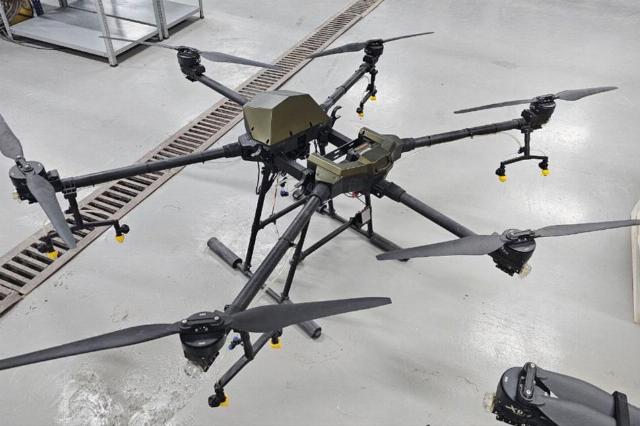
Hexacopter "Burevestnik"
Image source: © Evgenia Letta/ TASS
The company produces up to 3 thousand units per month and can scale up to 10 thousand, this process is already underway. There are plans to produce drones capable of flying for up to six hours, which is three times the average flight time of the devices. The copters currently being produced are being tested and delivered to their production facilities. Recently, one of the models in the Kursk area was able to bypass electronic warfare systems and fly to places where no drone had ever been able to before. As a result, the enemy's armored car was hit.
Fiber-optic drones bypass enemy jammers well. The demand for such models is very high, and they are going to launch their production in Khabarovsk. The company has already purchased special machines and coils. The fiber-optic drone will be able to fly about 30 km, Meleka says. This will be another modification of the Bee. Production will begin within a month, and up to 1,000 units per month are ready to be produced.
The struggle of management systems
Now, every day, every month, drones are becoming more technologically advanced and more complex. "There's actually an engineering battle going on, but I've made sure that our guys' brains aren't a bit worse. We are able to design the most complex systems in response to the enemy's developments, which are created in conditions of financial limitlessness, the ability to attract highly qualified specialists from around the world, and other factors," says Alexander Meleka, noting that the confrontation concerns not so much the range, payload, and other characteristics of the vehicles themselves as their control systems.
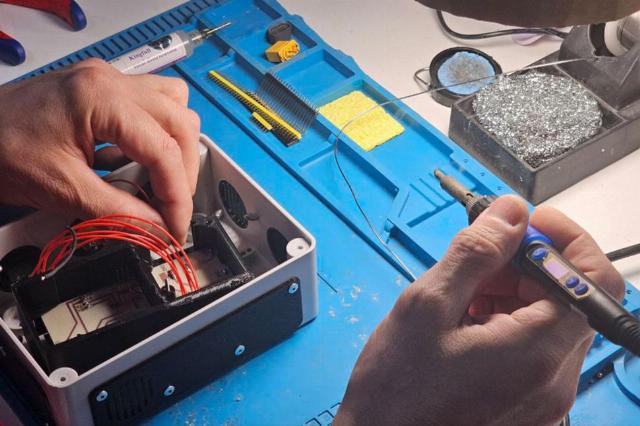
© Evgenia Letta/ TASS
Image source: © Evgenia Letta/ TASS
Currently, we are developing our own control systems that do not depend on GPS or GLONASS signals, are not tied to satellites, and do not require maintenance and configuration from third-party specialists. In order for the drone to overcome all barriers on the way to the target, to pass anti-drone guns, suppression systems, it must have its own closed communication.
"It will be an encrypted video communication system that allows you to go through any electronic warfare systems and get a picture in Full HD quality. It will fit any drone," Meleka says.
In addition, experts are working on a target targeting system based on artificial intelligence. The AI will be able to calculate the target with machine vision, offer the operator several objects from which the priority one will be selected, after which the drone will automatically fly to the target and hit it. Moreover, the target will not be lost due to certain configurations, unlike the technologies currently in use, when the drone can stop fixing an object when it turns or changes its position.
Fluffy and inter-regional flights
The infrastructure for drones has also begun to be developed in the regions of the Far East. For example, Russia's first drone port was opened on Sakhalin in May. For the first time, the Federal Air Transport Agency has approved the aeronautical passport of a landing site intended for use only by unmanned aircraft.
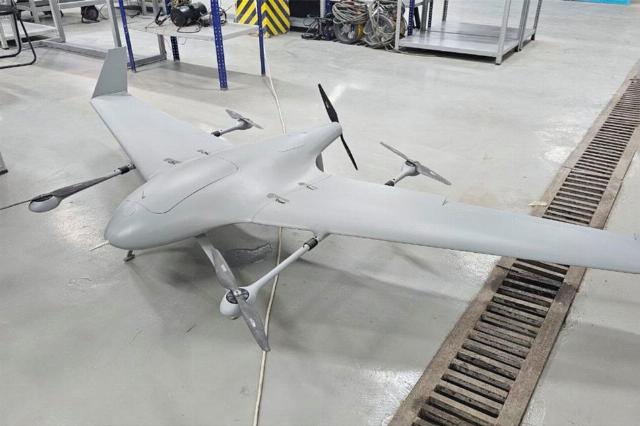
Vimpel aircraft-type UAV
Image source: © Evgenia Letta/ TASS
The status of a drone port was given to the Fluffy airfield in the Korsakov district of the region. This event, as noted in the regional government, marked the transition from point-to-point projects to the creation of a full-fledged infrastructure for regular and safe flights of drones, the opening of the drone port laid the foundation for the integration of vehicles into the existing transport system of the country.
The next stage will be the creation of a network of drone ports on the island and the development of a route network for drones. Drones are already being deployed in various directions.
For the development of the industry, the Ministry of Regional Development of Russia has worked out the issue of creating a single Far Eastern unmanned airline in the Far East in the Sakhalin Region.
One of the results of the work of the established company Aurora — unmanned Aircraft Systems was the first flight across the Tatar Strait in the history of unmanned aviation in Russia. It followed the rules of flight in controlled airspace along the routes of local air lines connecting the Sakhalin Region and Khabarovsk Territory. In the future, the company's activities will be scaled to other regions of the district.
About the WEF
The Eastern Economic Forum (EEF) is a leading platform for developing the economy of the Far East and expanding international cooperation in the Asia-Pacific region. In September 2025, the WEF will be held in Vladivostok for the tenth time.
Eugenia Letta
